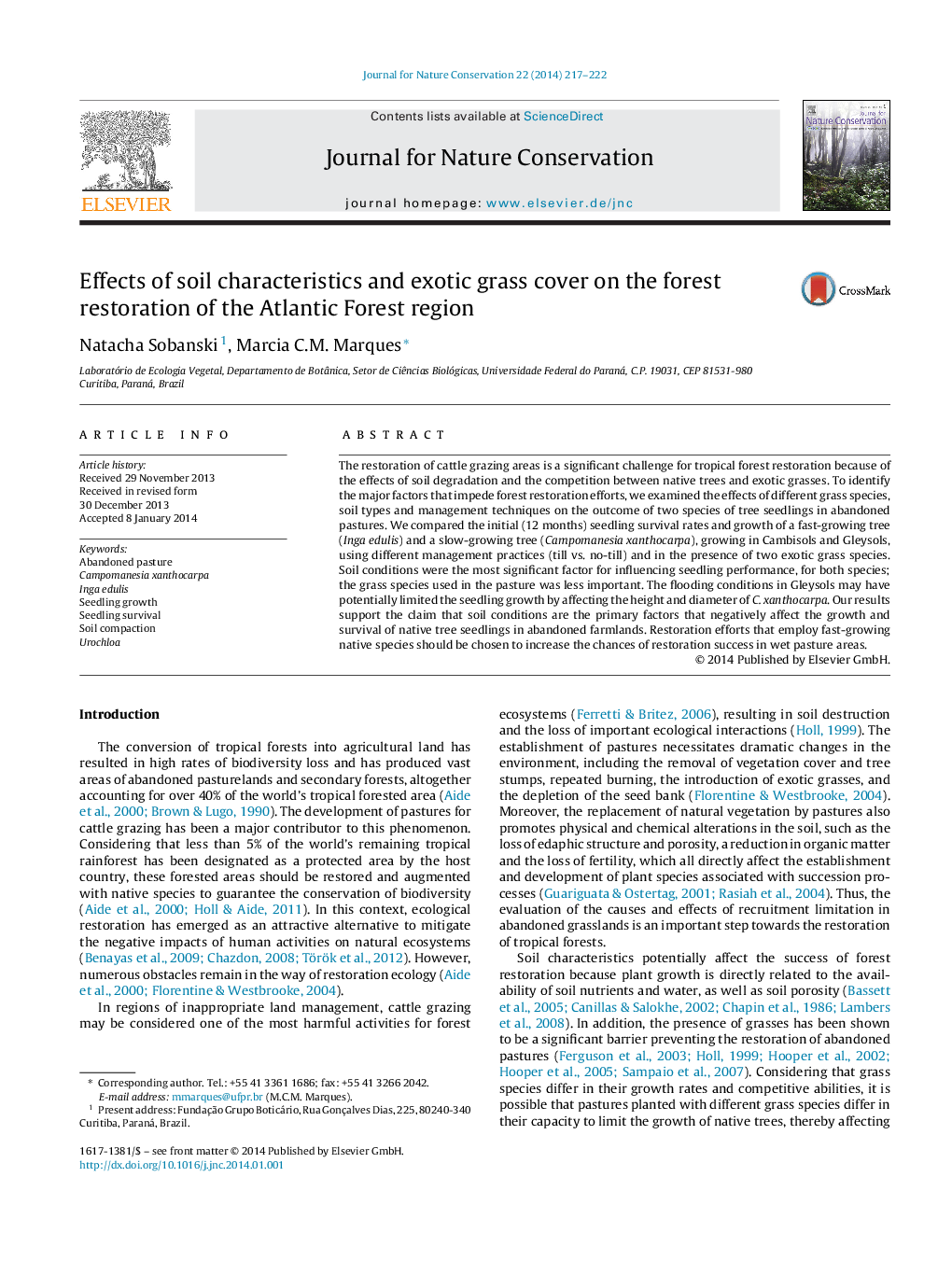| Article ID | Journal | Published Year | Pages | File Type |
|---|---|---|---|---|
| 4399814 | Journal for Nature Conservation | 2014 | 6 Pages |
The restoration of cattle grazing areas is a significant challenge for tropical forest restoration because of the effects of soil degradation and the competition between native trees and exotic grasses. To identify the major factors that impede forest restoration efforts, we examined the effects of different grass species, soil types and management techniques on the outcome of two species of tree seedlings in abandoned pastures. We compared the initial (12 months) seedling survival rates and growth of a fast-growing tree (Inga edulis) and a slow-growing tree (Campomanesia xanthocarpa), growing in Cambisols and Gleysols, using different management practices (till vs. no-till) and in the presence of two exotic grass species. Soil conditions were the most significant factor for influencing seedling performance, for both species; the grass species used in the pasture was less important. The flooding conditions in Gleysols may have potentially limited the seedling growth by affecting the height and diameter of C. xanthocarpa. Our results support the claim that soil conditions are the primary factors that negatively affect the growth and survival of native tree seedlings in abandoned farmlands. Restoration efforts that employ fast-growing native species should be chosen to increase the chances of restoration success in wet pasture areas.
